

Garh Palace, one of the best palaces in Rajasthan, is called Bundi Palace by the locals. Garh Palace in Bundi, a magnificent building, is a fine example of Rajput architecture, housing some of the superb Bundi frescoes. This massive palace was built by Raja Rao Ratan Singh Hada between 1607 AD and 1631 AD. Placed (localized) near the Taragarh Fort, Garh Palace resembles a clinging structure when seen from the top. Garh Palace houses miniature paintings of the best school of paintings in India - "Bundi School of Painting”. The Bundi Palace is easily recognizable by the elephants built at its entrance. There is a "Phool Mahal" and "Badal Mahal" in the vicinity of the palace. You can see good wall paintings, including a wonderful Chinese inspired ceiling, divided into petal shapes and decorated with peacocks etc. The Garh Palace of Bundi is considered one of the finest examples of Rajput architecture. Overlooking the city, this imposing building, somewhat decrepit, actually houses three palaces built during 17th & 18th centuries. A visit to Bundi Palace is worth the time, money and endeavour. One enters the Bundi Garh Palace through a gigantic gate, being escorted by stone-built elephants on either side, into Ratan Daulat. Ratan Daulat was built by Maharao Ratan Singh. Ratan Daulat is a very interesting structure forming a stable for nine horses and a Hathiya Pol. Upstairs, a magnificent white marble throne dominates the courtyard. Then we go to Chatra Mahal built by Maharao Chhatrasal Singh. It has beautiful murals in turquoise green, blue and yellow tones.
Bundi is 1000-year-old city and till 14th century it was ruled by Meena rulers. In early 14th century, it came under Rajputs via war, who ruled till 2009 (the last king didn’t have any child, so the current ruler is from the royal family if Alwar) Bundi was and is a flourishing city, and it is because of their Rajput rulers who had a great political sense which let them have friendly ties with Mughals, British and Government of India after 1947 independence. A famous ruler of Bundi, Ratan Singh was a close ally of Mughal emperor Jahangir and as per my guide, India wouldn’t have Taj Mahal if it wasn’t for Bundi empire whose army assisted Jahangir in many battles.
The palace is known for its beautiful Rajputana style of architecture, which can be easily seen from its several pillars and Jharokhas. The entrance to the palace is through a large gateway, which is carved with two huge elephants on either side of the gate, known as Hathi Pol, meaning Elephant Gateway. As soon as you enter the palace, visitors encounter the Diwan-E-Am or Ratan Daulat, also known as the royal court, which was used for coronation ceremonies. It is made completely out of pure white marble and is definitely worth a visit. Ratan Daulat or the royal court was built by Rao Raja Ratan Singh between the period of 1607 and 1631 and has enough stables to accommodate nine elephants and horses for parking the mounts of the several royalties attending the court. Then there is also the Buland Darwaza or the Great Gate, which is located at the foothills of the palace. Beyond the Great Gate, one can find the tomb of eminent Miran Hussain, which is surrounded by a grand 65 feet high and 16 feet wide gateway made out of red sandstone. However, eventually this gateway was painted white a few years after it was built. This mausoleum consists of two Chattri’s (Umbrella) and huge arches, showcasing different verses from the Koran.
Chattar Mahal is another beautiful palace within the premises of Garh Palace. It was built in 1660 by Chattar Sal, a Mughal loyalist and the only Rajput to hold such a powerful position in the office of Governor of Delhi. However, despite being loyal to the Mughals, Chattar Sal constructed this palace according to the Rajput architecture, with pavilions, elephant carvings and curved roofs, to signify his independence. This palace was made using stone that was available in one of the quarries of Bundi and also consists of several gold leaves, jewels and precious murals depicting Hindu deities, wild animals and the Maharaja’s Durbar.
West of Chattar Mahal is the Hathi Sala or Elephant Hall, which is known for its several columns with a carved elephant. This hall leads into the private and residential chambers of Chattar Sal, which are decorated with several beautiful elephant shaped patterns and pillars. There are also two small rooms towards the end of the hall, which are adorned with numerous murals depicting the life of Bundi’s locals during the 17th century.
Monuments in Bundi It is popularly believed that Nobel laureate Rudyard Kipling penned part of his famous novel ‘Kim’ in Bundi. In fact, so impressed was he by the place, that this is what he wrote about the Bundi palace: ‘Jaipur Palace may be called the Versailles of India … Jodhpur’s House of strife, gray towers on red rock, is the work of giants, but the Palace of Bundi, even in broad daylight, is such a palace as men build for themselves in uneasy dreams – the work of goblins rather than of men.’ Bundi is a magnificent town located around 36 kilometres from Kota. Dotted with palaces and forts, the place has a fairy tale quality about it. Bundi’s charm lies in its location –surrounded by orchards of orange, guava, pomegranate and mango trees, flanked by the Aravalli range and rivers and lined by fields of cotton, barley and wheat. Situated far from the crowds, it is the simple rural folk that lend Bundi its allure. Bundi was once ruled by the Hada Chauhans. Many historians claim that it was once the capital of the great Hadoti Kingdom, which was renowned for its art and sculpture. However, in 1624, Kota separated and became an independent state and this marked the beginning of the downfall of Bundi. Whether that may be, Bundi still retains its charismatic medieval grandeur. And just like Jodhpur and Rajput, the architecture of Bundi also possesses a noticeable bluish hue, designed to keep houses cool during hot summer, in the intricately carved brackets and pillars.
Bundi Tours is a beautiful tourist place in Rajasthan that manages to attract a large number of visitors. This has made Bundi tour packages very popular. The historical importance of the place and the presence of a number of historical structures are the main attraction for tourists visiting the town. The city welcomes you into its historic atmosphere and you would get lost in its charm. If you are up for some exploration, hire a cycle and scale the place. No matter where you go in Bundi, thick lassi (sweet yogurt drink) flavored with local spices and condiments would follow you. This is the land of ancient traditions and beauty, to awe-strike your vacation.
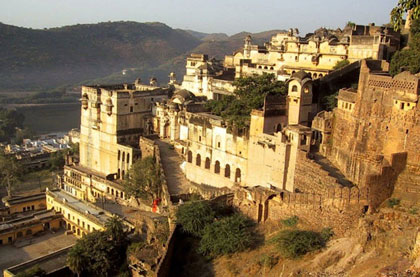
Duration : 04 Nights / 05 Days
Destination Covered : Kota - Bundi - Chittorgarh
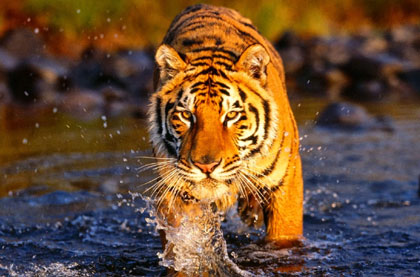
Duration : 04 Nights / 05 Days
Destination : Ranthambhore, Bundi, Chittorgarh, Udaipur, Ranakpur, Jodhpur
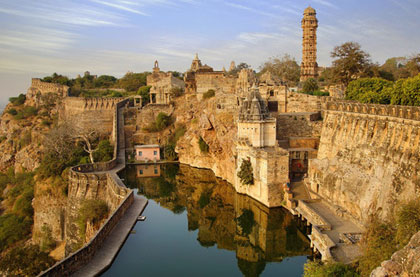
Duration : 08 Nights / 09 Days
Destination : Jaipur, Ranthambhore, Bundi, Chittaurgarh, Udaipur, Jodhpur, Jaisalmer, Jodhpur
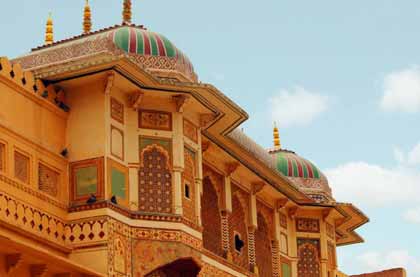
Duration : 14 Nights / 15 Days
Destination : Jaipur, Pushkar, Bikaner, Jaisalmer, Jodhpur, Mount Abu, Ranakpur, Udaipur, Chittorgarh, Bundi, Ranthambhore, Agra, Delhi
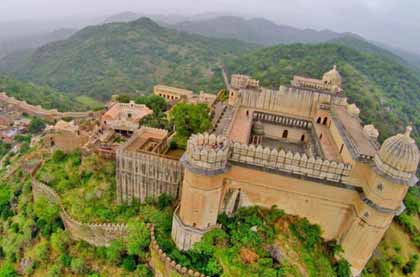
Duration : 22 Nights / 23 Days
Destination : Sariska, Bharatpur, Ranthambhore, Jaipur, Kota, Bundi, Chittorgarh, Udaipur, Kumbhalgarh, Jodhpur, Jaisalmer, Gajner, Dundlod, Delhi
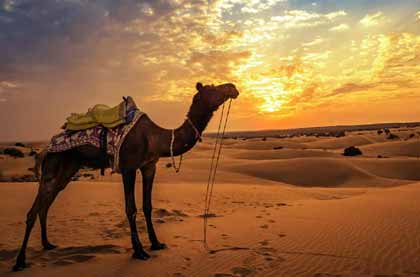
Duration : 20 Nights / 21 Days
Destination : Delhi, Jaipur, Pushkar, Ranthambore, Kota, Bundi, Chittorgarh, Bijaipur, Udaipur, Kumbalgarh, Jodhpur, Jaisalmer, Bikaner, Mandawa, Delhi